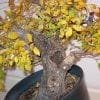What Is Bonsai Aesthetics?
Bonsai aesthetics traces its roots back to the olden days in Japan. The Japanese were the first people to introduce growing miniature trees and turning them into art. Bonsai aesthetics are actually the goals and characteristics set to be followed in growing the plant within a container. The aesthetics of bonsai rearing display the deep culture and traditions involved in the Japanese way of styling. Nowadays, people who are engaged in bonsai growing can choose from a wide variety of bonsai aesthetics to follow and serve as guidelines.
The main goal of pursuing the bonsai aesthetic process is to grow beautiful miniature trees. This is not just about growing small trees. It also involves growing them with an air of age. Shapes, proportions and details matter the most. The total age of the plant is also a factor. The bonsai aesthetic process creates mature trees that remain small in stature. The bonsai trees remain small as they are planted in a small container. The bonsai’s appearance should be similar to a regular tree of the same origin. The only difference besides their size is that an artist controls the shape of the tree. The goal is to give the tree a defined front that exaggerates the actual age of the bonsai.
Anyone who wants to question the aesthetics of a grown bonsai tree can do so by taking a look at its rear. This is because a disparity can be seen in the trunk and branches if the bonsai aesthetics were not done properly. The plant will look unattractive and display obvious cluttering. Awkward shapes can also be observed. On the other hand, the designer’s work must not be noticed by the viewer. The plant should appear to be all natural, and traces of wiring and scaling should be covered.
It is a common goal for bonsai growers to depict a specific ideal. They find it rather exciting to view a miniature of a huge tree. That is why a lot of trees that are found in rain forests are translated into smaller forms. These trees are very soothing to relieve those that are stressed out from a hectic day. There are a number of bonsai aesthetic types that are suited to a variety of different trees.
Bonsai growers are different than those who grow regular plants. This is because of the sense of responsibility that comes along throughout the years of growing these plants. Bonsais require special attention, touch and care. It takes much more patience to grow a bonsai tree than it does to keep regular flower-bearing or ornamental garden plants.
Different Types Of Bonsai Aesthetics
The ability to grow a bonsai plant is not the same as having a green thumb. It is also important that growers know which soil to use and what species goes along with it. It is also an artistic endeavor that allows people to show their creativity. That is why those with an aesthetic sense are encouraged to engage in this activity. They have the full potential for maximizing the beauty of the plant. It takes a certain artistic bent to nurture and grow a great bonsai plant. Bonsai planting is not just about planting a shrub. That is why only serious growers succeed in this undertaking.
Bonsai aesthetics are flourishing as there are many different types of bonsai plants. Bonsai growers should know about the particular characteristics of their plants in order to best apply their craft. These aesthetics will determine how long the plant will be reared until it becomes mature. The following are different types of aesthetics that bonsai growers use to evaluate plants.
Miniaturization
This is the basic characteristic that most bonsais have. They are nurtured to become a miniature replica of the larger trees found in nature. That is why they are grown in small plastic containers or pots. Bonsais still grow to look mature although they remain small.
Leaf Reduction
This method is otherwise known as pruning. This is done as bonsai plants tend to grow numerous leaves. They should be eliminated by using this technique. Leaf reduction has been used by all bonsai masters since the beginning of the art form.
Ramification
This process is done to split the twigs that will stop bonsai plants and trees from growing unwanted stems and branches. Ramification can be incorporated with pruning and leaf reduction for a better outcome.
Gravitas
Bonsais are best known for this characteristic. The gravitas holds the maturity and the weight of the plant together with its dignity while it is nurtured to remain small.
Lignification
This aesthetic process is responsible in making the bonsai’s branches look woodier despite their size. It is also responsible in creating the brown and rough surface on the plant. However, the results may vary from one plant to another.
Curvature
This aesthetic process is deemed to be optional. It is used when planting a bonsai in a tray. The curvature process allows the tree to look sturdier and more mature regardless of its size.
Nebari
This is the horticultural buttressing of the bonsai roots. This process ensures that the roots are grown just beneath the base of the bonsai. This is also the same characteristic that makes the plant grounded. In fact, this is the most important aesthetic process as it will determine the growth of the plant.
Deadwood
This aesthetic process is optional when growing a bonsai tree. Those who want their bonsai to look more mature can put deadwood on the surface. The deadwood can remain on the surface for a matter of years.
People grow bonsai for a lot of reasons. Some do it to earn a living. Others pursue this craft to display their artistic side. Bonsai is an art form that will last over period of years. Bonsai growing also proves to be aesthetically logical. It is always a great activity as these plants can grow old with their rearers.


